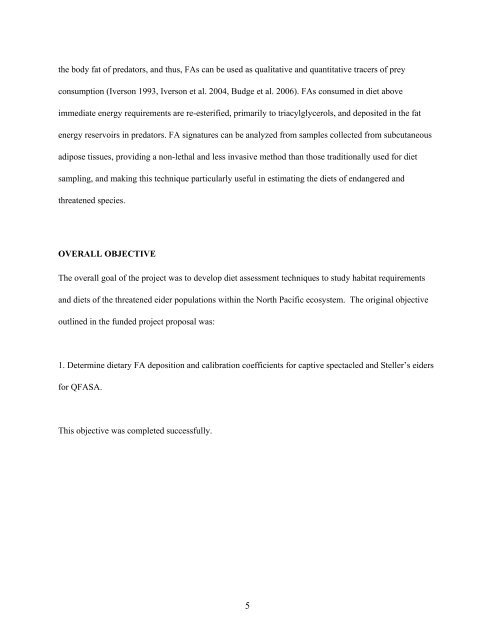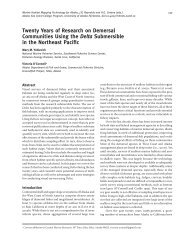724_Final Report.pdf - North Pacific Research Board
724_Final Report.pdf - North Pacific Research Board
724_Final Report.pdf - North Pacific Research Board
You also want an ePaper? Increase the reach of your titles
YUMPU automatically turns print PDFs into web optimized ePapers that Google loves.
the body fat of predators, and thus, FAs can be used as qualitative and quantitative tracers of prey<br />
consumption (Iverson 1993, Iverson et al. 2004, Budge et al. 2006). FAs consumed in diet above<br />
immediate energy requirements are re-esterified, primarily to triacylglycerols, and deposited in the fat<br />
energy reservoirs in predators. FA signatures can be analyzed from samples collected from subcutaneous<br />
adipose tissues, providing a non-lethal and less invasive method than those traditionally used for diet<br />
sampling, and making this technique particularly useful in estimating the diets of endangered and<br />
threatened species.<br />
OVERALL OBJECTIVE<br />
The overall goal of the project was to develop diet assessment techniques to study habitat requirements<br />
and diets of the threatened eider populations within the <strong>North</strong> <strong>Pacific</strong> ecosystem. The original objective<br />
outlined in the funded project proposal was:<br />
1. Determine dietary FA deposition and calibration coefficients for captive spectacled and Steller’s eiders<br />
for QFASA.<br />
This objective was completed successfully.<br />
5



